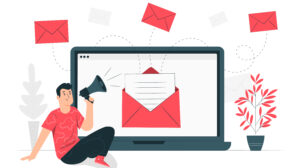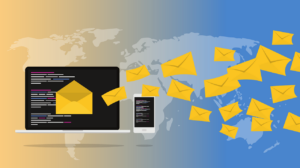With the explosion of digital channels, marketers are expected to convey an image of omnipresence. On one hand, this is great for smaller businesses as they have the chance to reach more prospective customers across different touchpoints online. On the other hand, monitoring and running marketing activities on well over a dozen channels (social, email, website, search engine marketing, events, PR, offline channels…) can quickly become overwhelming.
Marketing automation, when applied thoughtfully, can bring tremendous efficiencies to marketing operations of any scale. What exactly is it? According to Salesforce’s definition, marketing automation is a technology that manages marketing processes and multifunctional campaigns across channels in an automated manner.
With marketing automation, brands can set rules campaigns to run in an independent manner based on rules and parameters they define. For example, you could send an automated discount code email to people in your customer base on the day of their birthday.
While the benefits of automation stretch far and wide to drive engagement, brand awareness and marketing ROI, it is a delicate balance. Below, we explore various automation approaches and how to go about to ensure you don’t lose your customer’s trust: without context, you risk sending the wrong message at the wrong time which will hurt your reputation. Remember, all customers want to feel special with content that feels tailor-made for them.
Building Trust with Customer-Centric Marketing
Before we jump into the dos and don’ts of marketing automation, let’s start with your existing customers. While 44% of businesses focus on customer acquisition, it costs five times as much compared to retaining an existing one. How does this statistic relate to marketing automation? You should set your operations to run automated campaigns to your existing customers as they are likely to yield the highest return on investment.
Since 70% of businesses are looking to spend more on technology, this is a good time to gear up for the marketing automation race and invest in customer relationship management (CRM) software – if you don’t already have one. There are many options to go with – some include marketing features while others are more focused on tracking sales-focused metrics like contact activity on your website or lead status.
Choosing one with the right set of features depends largely on your expertise level and revenue goals. Look at your revenue sources to determine which functions are integral to your business needs and prioritize accordingly.
With well-oiled CRM software, you’ll be able to set up efficient automation workflows that send targeted content for the right audience at an optimal time. Showing relevant content that a person is likely to be interested in will put your brand in a favorable light.
Email Marketing Automation
With email marketing automation you’ll personalize your email content, such as the subject line, body copy, message, or even products displayed by each contact’s unique values where the CRM will pull that value from your contact’s profile. You can also use content values such as “industry” to build vertical-specific lists and send personalized messages.
Here are a few practical applications:
- Subject lines: Hi –first name–! This is proven to increase open rates.
- Body copy: Are you doing this at –company name–? Mentioning a contact’s company helps build a link between yours and theirs
- Content personalization based on industry. Say you provide beauty and haircare products for professionals – divide your lists accordingly and only show products and promotions based on interests.
Some of the other practical uses include trigger-based automation where you can send an automated message based on activity or inactivity. If three case studies are viewed in a row, you can send a fourth one via email based on this rule, or if they haven’t shopped in two months, you can trigger an email discount code to woo them back.
Note that for this type of personalization to work, you will have to be meticulous about keeping your contact information current at all times. Make sure you and your sales team take the time to fill out all required data points – otherwise it may harm your image. Just imagine a scenario where someone misspelled a first name and it ends up on the email subject line.
Paid Social Automation and Social Media Automation
Paid social automation pays off if you’re running a high volume of campaigns on channels like Instagram and Pinterest. In certain industries, like online e-commerce, social media campaigns are the bread and butter of revenue.
The question is, when should you start automating campaigns? After all, the tools the native platforms offer are free of cost while there is a few for using the more advanced software for ad buying and creative automation.
If you’re only spending moderately, for example under $25,000 a month, it’s best to keep to the native tools. Once you cross that threshold and notice that your days are spent optimizing and tweaking campaigns manually, it’s time to make the plunge.
What’s great about having a paid social partner and platform, is that you’ll be able to tap into their expertise on the latest best practices on matters like audience building and targeting, budgets and bidding, automated campaign setups, and even creative automation.
With a partner, you’ll avoid most of the common mistakes that happen with paid social automation and consequently, you’ll avoid making your campaigns look suspicious. For example, you should never automatically retarget people with the same or similar products they just bought. Instead, show them best-sellers in a different category to drive cross-sales.
Creative automation can make or break trust. In essence, this means using pre-designed video and image templates that automatically pull dynamic content from your product catalog (this can be as simple as a Google Spreadsheet).
You’ll essentially use pre-made animations or graphic overlay and populate the ad with the right message, price, and image for example. Just beware that you’ll need to make sure all images are cropped the same way and that copy is not too long to fit in your ad.




